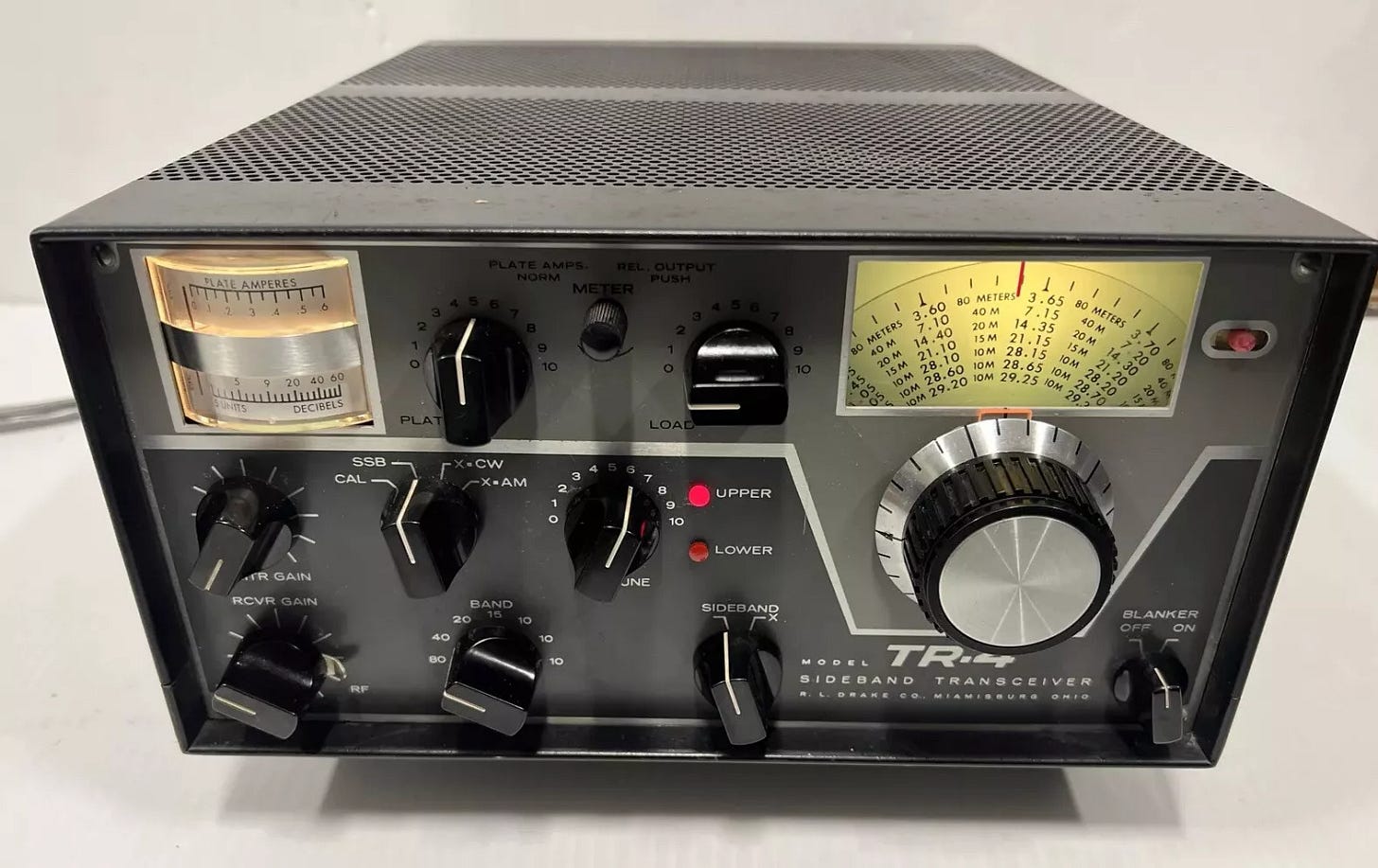Review of the Classic DRAKE TR-4 HF Transceiver
The DRAKE TR-4 HF Transceiver is a classic piece of amateur radio equipment that remains highly regarded among ham radio enthusiasts. Introduced in the 1960s, it was designed as a successor to the TR-3, bringing significant improvements in performance and usability. Even today, collectors and radio operators appreciate its solid design, reliable performance, and nostalgic charm.
Design and Build Quality
The DRAKE TR-4 features a sturdy metal chassis with a distinctive black and silver front panel. The layout is intuitive, with well-spaced knobs and dials for tuning, mode selection, and gain control. The frequency dial is large and easy to read, providing precise control over tuning. The build quality reflects the high standards of the R.L. Drake Company, ensuring long-term durability.
Technical Specifications
The TR-4 is an HF transceiver capable of operating on the 80, 40, 20, 15, and 10-meter amateur bands. It employs a tube-based design, using a combination of vacuum tubes for signal amplification and modulation. The receiver section provides good sensitivity and selectivity, making it suitable for both casual operation and more demanding communication needs.
Some key technical aspects include:
Power Output: Approximately 200 watts PEP (Peak Envelope Power) on SSB.
Modes Supported: SSB and CW.
Power Requirements: Operates on an external power supply, typically the AC-4 or DC-4.
Frequency Stability: Good for its time, though it requires warm-up for optimal stability.
Performance and Usability
One of the most notable aspects of the TR-4 is its strong and clear audio quality. The transceiver’s tube design contributes to a warm and natural-sounding signal, making it ideal for long QSOs. The receiver performance is robust, capable of handling weak signals with minimal interference.
The transceiver features an efficient VOX (Voice Operated Transmit) system, allowing for hands-free operation. The AGC (Automatic Gain Control) works well to maintain consistent audio levels, reducing sudden volume changes from varying signal strengths. The built-in calibrator assists in precise frequency tuning, which is essential for accurate operation.
While the TR-4 does not have the digital readouts or advanced filtering options found in modern transceivers, it remains a highly capable radio for those who appreciate vintage equipment. Its straightforward design and analog controls provide a hands-on experience that many operators find rewarding.
Maintenance and Modifications
Due to its age, maintenance is a key consideration for any TR-4 owner. The vacuum tubes will eventually require replacement, and periodic alignment is necessary to ensure optimal performance. The capacitors and resistors may also need servicing over time.
Many radio enthusiasts modify the TR-4 to enhance performance, such as improving frequency stability with solid-state conversions or adding better filtering to reduce adjacent signal interference. Despite these modifications, the transceiver’s original design remains highly functional and respected.
Collectibility and Value
The TR-4 is a sought-after transceiver among vintage radio collectors. Well-maintained units, especially those with original accessories like the AC-4 power supply and external speaker, can command premium prices. Its historical significance, combined with its continued usability, ensures that it remains a prized piece of equipment in the ham radio community.
Final Thoughts
The DRAKE TR-4 HF Transceiver is a remarkable example of mid-20th-century radio engineering. Its durable construction, warm audio quality, and straightforward operation make it a favorite among vintage radio enthusiasts. While it may lack modern digital conveniences, its reliability and charm more than make up for it. Whether for everyday use or as a collector’s item, the TR-4 continues to be a respected and valued transceiver in the world of amateur radio.




